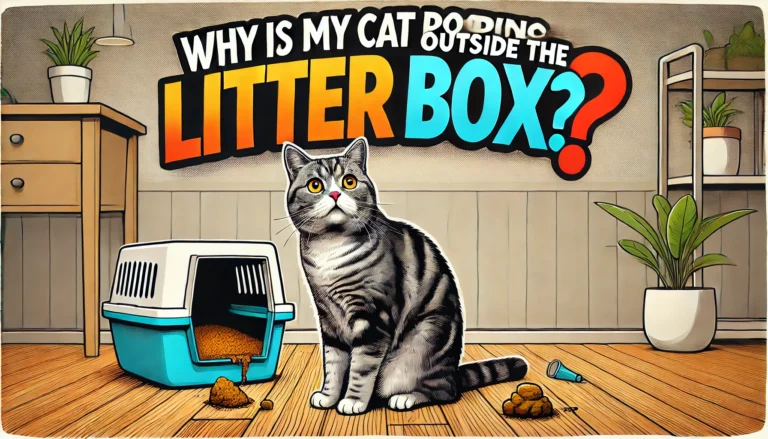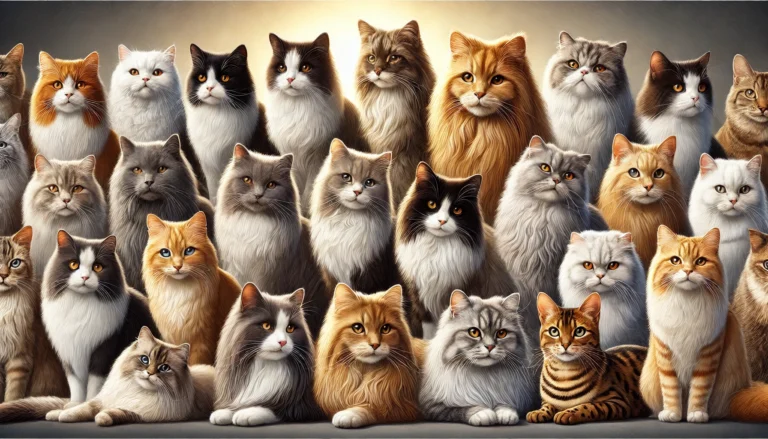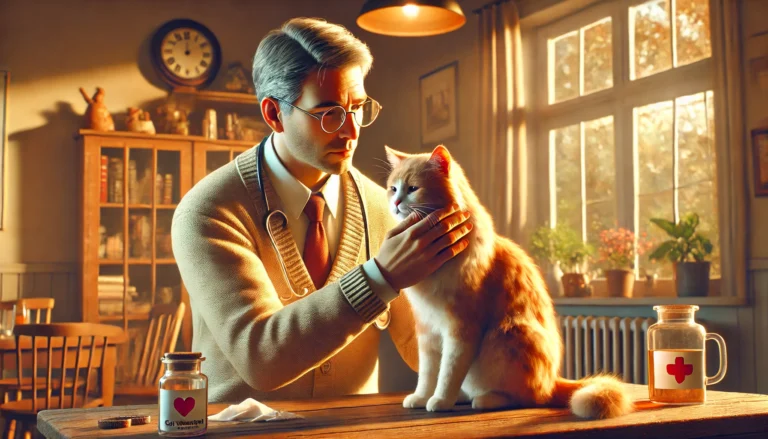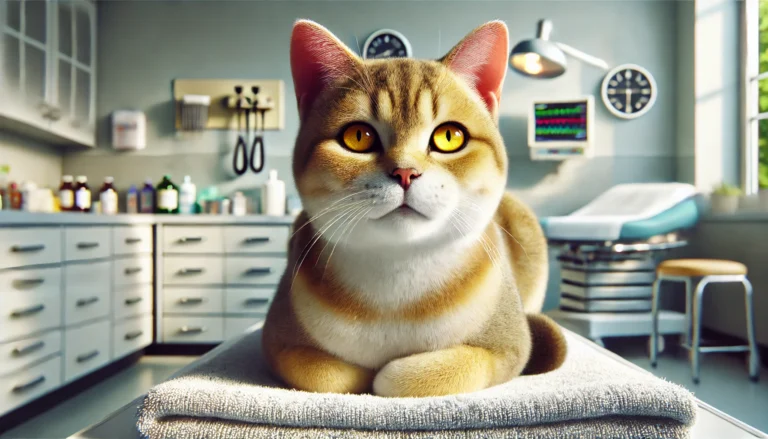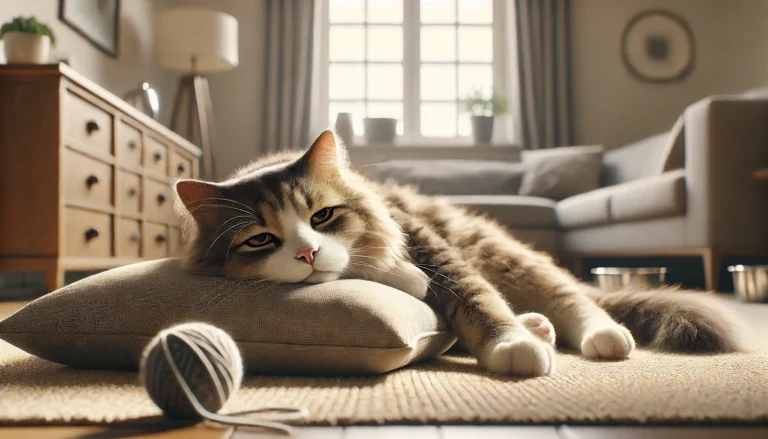Pica in Cats -pica symptoms in cats
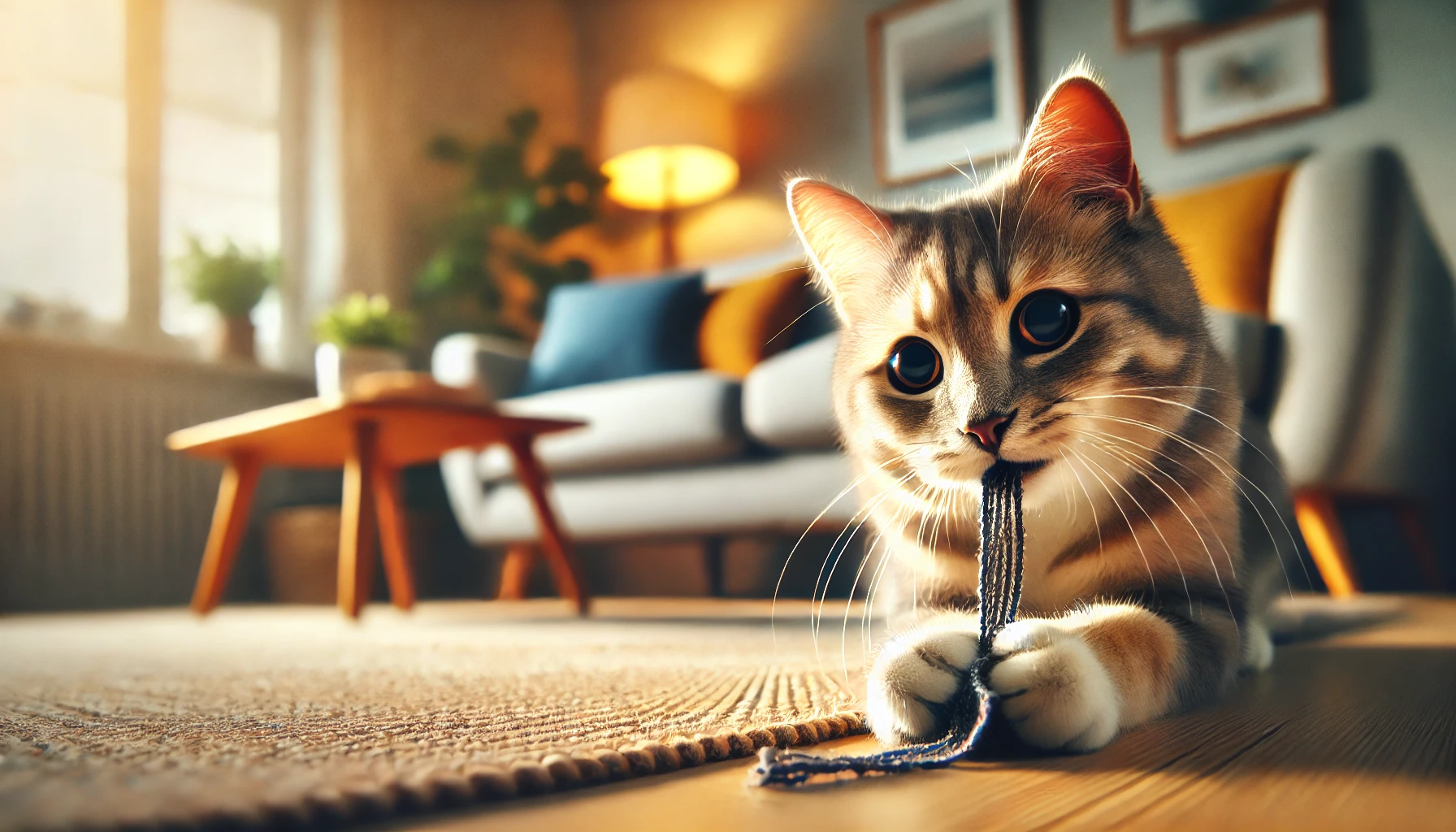
Pica in cats is a behavioral condition where cats eat non-food items, such as fabric, plastic, paper, or even dirt. This unusual behavior can lead to a range of health concerns, including gastrointestinal issues, blockages, and even poisoning in some cases. Understanding pica, its causes, symptoms, and treatments, can help cat owners identify the condition early and take necessary actions to protect their pet’s health.
What is Pica in Cats?
Pica is a term used to describe a condition in which animals or humans eat substances that are not typically considered food. In cats, pica can manifest as chewing or swallowing objects like fabric, plastic, rubber, string, paper, or plants. While cats are naturally curious and may occasionally nibble on non-food items, persistent and compulsive ingestion of such materials is considered a disorder.
While occasional chewing or licking of non-food items is normal for cats, pica occurs when this behavior becomes excessive or chronic. This can lead to potentially dangerous consequences, including gastrointestinal blockages, choking, or poisoning if the ingested materials are harmful.
Common Causes of Pica in Cats
Understanding the underlying causes of pica in cats is crucial for effectively addressing the behavior. The reasons behind pica are varied and can be divided into physical, psychological, and environmental factors. Let’s explore these causes in greater detail.
1. Medical or Physical Conditions
In some cases, pica in cats may be caused by underlying medical or physical issues. Conditions that affect the cat’s appetite, digestion, or overall health can lead to compulsive eating of non-food items.
- Nutritional Deficiencies: Cats may develop pica due to a lack of specific nutrients in their diet. Deficiencies in vitamins, minerals, or amino acids may drive cats to seek out non-food items as an attempt to fulfill nutritional gaps.
- Gastrointestinal Issues: Conditions such as gastrointestinal disorders or malabsorption can make cats feel hungry despite eating. The sensation of needing more food might prompt them to chew on objects.
- Dental Problems: If a cat is experiencing dental pain or discomfort, they may chew on non-food items as a form of relief. Teeth and gum issues could drive them to seek out something to gnaw on.

2. Psychological and Behavioral Factors
Psychological causes play a significant role in pica. Cats may develop pica due to stress, anxiety, boredom, or compulsive behavior. These psychological triggers can lead to unusual eating habits and obsessive behaviors.
- Stress and Anxiety: Cats are highly sensitive to changes in their environment, and stress is one of the most common causes of pica. Moving to a new home, introducing a new pet, or changes in the household routine can make cats anxious, leading them to engage in destructive behaviors like pica.
- Boredom: Cats that are left alone for long periods or don’t receive enough stimulation may develop pica as a way to cope with boredom. This is particularly common in indoor cats who lack mental and physical stimulation.
- Compulsive Behavior: In some cats, pica may develop as a compulsive behavior. Just like humans can have compulsive habits, cats can develop repetitive behaviors that are difficult to break. Pica may be a coping mechanism that provides comfort, especially if the cat has learned to associate chewing on non-food items with relief from stress.
3. Environmental Factors
The environment in which a cat lives can also influence the development of pica. Certain household conditions, items, and surroundings may encourage this behavior.
- Availability of Objects: Cats that have easy access to non-food items like rubber bands, shoelaces, or paper towels may begin to chew on these items out of curiosity. The more accessible the objects, the higher the likelihood of pica developing.
- Cleaning Products and Chemicals: Some cats are attracted to cleaning products, such as certain smells or tastes of detergents, soaps, or bleach. These chemicals can attract cats, leading them to chew on items in areas where such products are stored.
- Cat-Specific Items: Sometimes, even objects designed for cats, such as cat toys or bedding, may trigger pica if they are made of materials that appeal to the cat’s chewing instincts, like soft fabrics or string.
Signs and Symptoms of Pica in Cats
Identifying pica in cats can sometimes be challenging, especially when the cat’s behavior appears to be just normal curiosity or playful activity. However, there are specific signs to look out for if you suspect your cat may have pica.
1. Excessive Chewing or Eating of Non-Food Items
The most obvious sign of pica is the consistent, compulsive chewing or eating of items that are not food. Cats may start with small objects, like chewing on a shoelace or paper, and progress to more dangerous items, such as plastic bags, rubber bands, or string.
2. Vomiting or Digestive Issues
Cats that eat non-food items may experience gastrointestinal problems. Vomiting, diarrhea, or a lack of appetite can be signs that your cat has ingested something that is causing irritation or a blockage in their digestive system.
3. Loss of Appetite or Weight Loss
Some cats with pica may lose interest in their regular food and show a decrease in appetite. If your cat is eating non-food items but not eating their regular meals, this can be a cause for concern.
4. Choking or Difficulty Swallowing
In severe cases, eating inappropriate objects may cause your cat to choke or have difficulty swallowing. This can lead to more serious complications, including blockage of the intestines or esophagus.
5. Obsessive Behavior
Pica in cats often becomes a repetitive or compulsive behavior. Your cat may spend excessive time chewing on the same object, returning to it over and over again despite being redirected. This can indicate that pica is a behavioral issue rather than a passing phase.
Diagnosing Pica in Cats
If you notice your cat engaging in pica behaviors, it’s important to consult with a veterinarian for a proper diagnosis. Pica may be caused by a variety of factors, and a veterinarian will need to rule out any medical conditions that could be contributing to the behavior.
1. Physical Exam
The veterinarian will conduct a thorough physical examination of your cat to check for any signs of gastrointestinal issues, dental problems, or other health concerns. This step helps in identifying any physical causes of pica.
2. Blood Tests and Urinalysis
To rule out nutritional deficiencies or underlying diseases, the vet may suggest blood tests or urinalysis. These tests can help identify issues like anemia, liver disease, or hormonal imbalances that might be contributing to the behavior.
3. X-rays or Ultrasound
If your cat has been eating non-food items and showing signs of gastrointestinal distress, the veterinarian may recommend an X-ray or ultrasound to check for blockages or foreign objects in the stomach or intestines.
4. Behavioral Evaluation
In cases where pica is believed to be a behavioral issue, your vet may recommend a behavioral evaluation. This could include questionnaires for you to fill out about your cat’s environment, daily routines, and potential stressors.
Treatment and Management of Pica in Cats
Once a diagnosis is made, treatment for pica will depend on the underlying cause of the condition. The goal is to address both the physical and psychological factors that may be contributing to the behavior.
1. Treating Underlying Medical Conditions
If your cat’s pica is due to a medical condition, such as a nutritional deficiency, dental issue, or gastrointestinal disorder, the veterinarian will develop a treatment plan to address that condition. This may include dietary changes, medications, or treatments for the underlying health issue.
2. Behavior Modification
For cats whose pica is caused by boredom, anxiety, or stress, behavior modification is often the most effective treatment. Here are some strategies that can help:
- Environmental Enrichment: Provide a stimulating environment for your cat. Introduce new toys, climbing structures, scratching posts, and interactive playtime to keep your cat engaged. Cats need mental stimulation to prevent boredom-driven behaviors like pica.
- Positive Reinforcement: Reward your cat with treats or affection when they engage in appropriate behavior, and gently redirect them if they start chewing on non-food items. Over time, positive reinforcement can help break the cycle of compulsive pica behavior.
- Reducing Stress: Minimize stressors in your cat’s environment by creating a calm, consistent routine. If your cat is anxious, consider using pheromone diffusers, such as Feliway, which can help alleviate stress.
- Redirecting Attention: Offer safe alternatives for chewing, such as rubber toys or cat-safe treats, to redirect your cat’s chewing instincts to appropriate items.
do you know
Cats are known for their meticulous grooming and generally reserved nature, making the sight of a drooling cat somewhat unusual and potentially alarming for pet owners. Drooling, or salivation, in cats can range from normal, benign behaviors to indications of serious health issues.
3. Medical Management
In some cases, your veterinarian may prescribe medication to help control pica. Anti-anxiety medications or antidepressants may be recommended to help address underlying behavioral issues, particularly if stress or anxiety is a contributing factor.
Preventing Pica in Cats
While it may not always be possible to prevent pica completely, there are steps you can take to reduce the likelihood of it developing in your cat.
- Provide a Balanced Diet: Ensure your cat’s diet is complete and balanced, with the right amount of vitamins, minerals, and proteins. If you suspect a nutritional deficiency, consult with your vet about the best food for your cat’s specific needs.
- Create an Enriching Environment: Keep your cat mentally and physically stimulated with plenty of toys, climbing spaces, and opportunities for interactive play.
- Monitor Access to Harmful Items: Keep small objects, rubber bands, paper, and other non-food items out of your cat’s reach. This will help minimize the temptation for your cat to engage in pica.
Conclusion
Pica in cats is a complex and potentially dangerous condition that requires attention and understanding. Whether it’s caused by medical issues, stress, or boredom, addressing the underlying cause of pica is key to managing the behavior and ensuring your cat’s health. By working closely with your veterinarian and implementing appropriate changes in your cat’s environment, you can reduce the likelihood of pica and promote a healthier, happier life for your feline companion.
How do you treat pica in cats?
Treating pica in cats depends on identifying the root cause of the behavior. If the pica is due to a medical condition such as nutritional deficiency or gastrointestinal problems, a veterinarian will provide appropriate treatment, such as dietary changes or medications to address the issue. If pica in cats is behavioral, addressing underlying stress or anxiety is crucial. Techniques like environmental enrichment (providing toys, climbing spaces, and interactive play), positive reinforcement (rewarding appropriate behavior), and using pheromone diffusers to reduce anxiety can be effective.
How can you tell if a cat has pica?
You can tell if a cat has pica in cats by observing consistent, compulsive chewing, licking, or ingesting non-food objects, such as plastic, fabric, rubber bands, or paper. While cats may occasionally nibble on items out of curiosity, pica in cats is characterized by excessive or repeated consumption of these non-food materials. Additional signs include digestive distress like vomiting, diarrhea, or a decrease in appetite, as well as potential choking or difficulty swallowing. If your cat is ignoring regular food in favor of non-food items or seems to be obsessed with chewing
Why do cats lick metal?
Cats may lick metal for various reasons, and in some cases, it can be related to pica in cats. One possible cause is a mineral deficiency, as cats may be seeking metal surfaces that contain trace amounts of iron or other minerals. Cats may also lick metal due to curiosity or because it offers a different texture than their usual surroundings. In some cases, it can be a compulsive behavior linked to pica in cats, driven by stress, anxiety, or boredom. It’s important to monitor this behavior, as licking metal frequently can damage the cat’s teeth and may indicate a nutritional imbalance, so consulting a veterinarian is recommended if this becomes a persistent habit.
Is pica life threatening for cats?
Yes, pica in cats can potentially be life-threatening if the cat ingests harmful or dangerous non-food objects. For instance, chewing on string, rubber bands, or plastic can lead to choking, gastrointestinal blockages, or internal injuries. Sharp or toxic items, such as certain plants or cleaning chemicals, may cause poisoning or severe harm. Moreover, pica in cats can lead to malnutrition or digestive issues if the cat consumes non-nutritional materials. The condition is more than just a nuisance and requires immediate attention. If you notice your cat engaging in compulsive eating of non-food items, it’s essential to consult a veterinarian to prevent serious complications and develop a treatment plan.
Is it safe for cats to lick?
Licking is a normal behavior for cats and is essential for grooming, but it can become problematic in certain cases, especially when it turns into compulsive licking, as seen with pica in cats. If a cat is licking surfaces or objects that are not intended to be licked, such as metal, plastic, or synthetic materials, this can be a sign of pica in cats. Excessive licking of these non-food items may lead to gastrointestinal issues, oral health problems, or even poisoning. While occasional licking of safe objects like a cat’s own paws or body is harmless, excessive or compulsive licking should be addressed by a veterinarian to determine if it’s related to underlying issues like stress, boredom, or nutritional deficiencies.
What foods are high in iron for cats?
Iron is an essential nutrient for cats, especially for those with anemia or who need to boost their iron levels. Foods high in iron for cats include liver (such as chicken or beef liver), which is one of the richest natural sources of iron. Canned cat food with high-quality animal protein, like turkey, chicken, or beef, is also a good option, as these meats are rich in bioavailable iron. For cats experiencing pica in cats, it’s crucial to ensure they’re consuming a balanced diet that provides adequate iron to avoid potential deficiencies that might contribute to the compulsive eating of non-food items. Always consult with your vet to ensure you’re providing the right dietary adjustments for your cat’s health.
What is licking syndrome in cats?
Licking syndrome in cats refers to a behavior where cats excessively lick themselves or objects, often to the point of causing skin damage or hair loss. It can be a sign of anxiety, stress, or a compulsive disorder. In some cases, excessive licking could be related to pica in cats, particularly if the cat licks non-food objects or surfaces. Licking syndrome might also be triggered by physical conditions such as allergies, skin infections, or parasites. When excessive licking becomes a persistent problem, it’s essential to rule out underlying medical issues. Behavioral causes, including boredom or anxiety, may also contribute, so providing enrichment, comfort, and a routine can help manage the behavior.
Do anemic cats sleep a lot?
Yes, anemic cats often sleep more than usual. Anemia, which can be caused by a lack of iron or other essential nutrients, leads to reduced oxygen levels in the bloodstream, making the cat feel lethargic or weak. This can result in increased sleep or a noticeable decrease in activity levels. If a cat is also exhibiting pica in cats, where they are consuming non-food items in an attempt to obtain missing nutrients, the lethargy could be exacerbated. Other symptoms of anemia in cats include pale gums, rapid breathing, and weight loss. If you suspect your cat may be anemic or is showing signs of pica in cats, it’s crucial to visit a veterinarian for a thorough evaluation and treatment plan.

